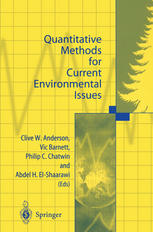

Most ebook files are in PDF format, so you can easily read them using various software such as Foxit Reader or directly on the Google Chrome browser.
Some ebook files are released by publishers in other formats such as .awz, .mobi, .epub, .fb2, etc. You may need to install specific software to read these formats on mobile/PC, such as Calibre.
Please read the tutorial at this link: https://ebookbell.com/faq
We offer FREE conversion to the popular formats you request; however, this may take some time. Therefore, right after payment, please email us, and we will try to provide the service as quickly as possible.
For some exceptional file formats or broken links (if any), please refrain from opening any disputes. Instead, email us first, and we will try to assist within a maximum of 6 hours.
EbookBell Team

5.0
38 reviewsIt is increasingly clear that good quantitative work in the environmental sciences must be genuinely interdisciplinary. This volume, the proceedings of the first combined TIES/SPRUCE conference held at the University of Sheffield in September 2000, well demonstrates the truth of this assertion, highlighting the successful use of both statistics and mathematics in important practical problems.
It brings together distinguished scientists and engineers to present the most up-to-date and practical methods for quantitative measurement and prediction and is organised around four themes:
- spatial and temporal models and methods;
- environmental sampling and standards;
- atmosphere and ocean;
- risk and uncertainty.
Quantitative Methods for Current Environmental Issues is an invaluable resource for statisticians, applied mathematicians and researchers working on environmental problems, and for those in government agencies and research institutes involved in the analysis of environmental issues.